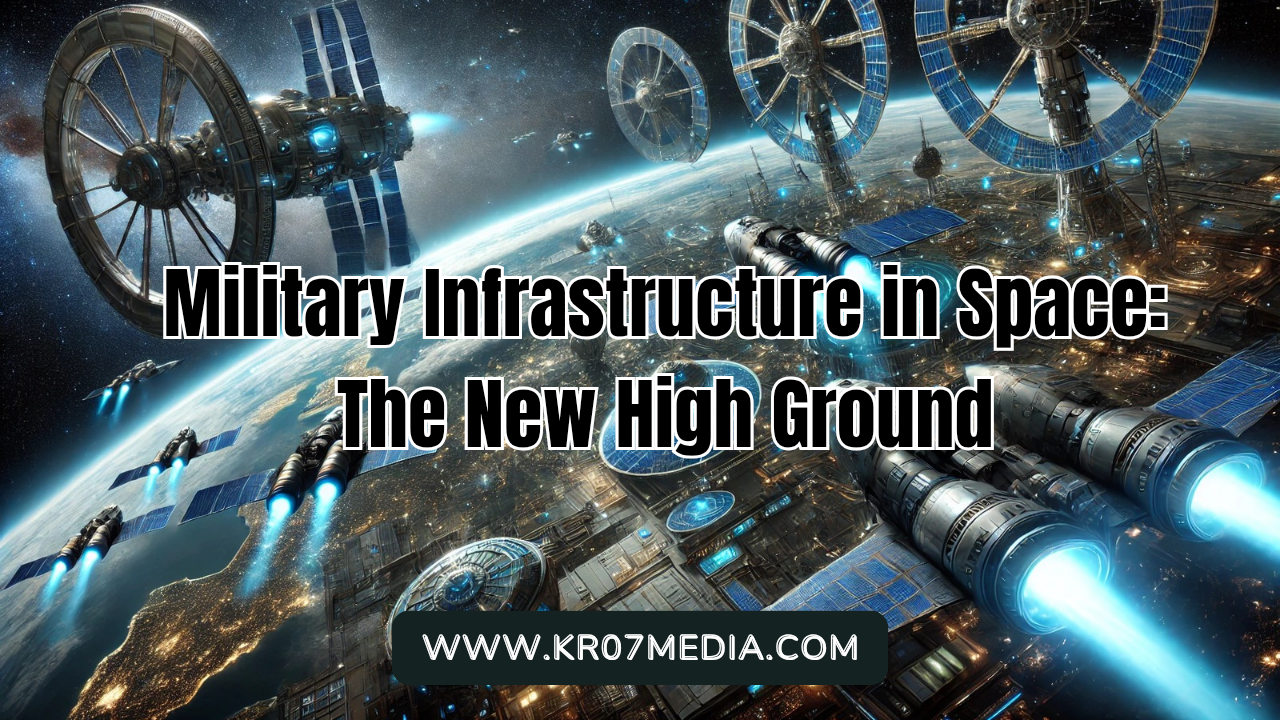The concept of space as the "final frontier" has long been popularized by science fiction, but in the 21st century, it has taken on a more strategic and militaristic significance. As nations vie for dominance beyond Earth’s atmosphere, space is increasingly being regarded as the new "high ground" in modern warfare. The development of military infrastructure in space is no longer a futuristic fantasy; it is a present-day reality reshaping global security dynamics.
The Evolution of Space as a Military Domain
Historically, space was primarily seen as a domain for scientific exploration and communication. However, the launch of the Soviet Union’s Sputnik in 1957 marked the beginning of the space race, prompting the United States and other countries to recognize its strategic potential. The Cold War saw the militarization of space through the development of satellite technology for reconnaissance, navigation, and communication.
Today, space is not just a supportive domain for terrestrial operations; it is a contested environment where the potential for direct conflict looms. The 2007 Chinese anti-satellite (ASAT) missile test and the 2019 establishment of the United States Space Force illustrate how space has become integral to national defense strategies.
Key Components of Military Infrastructure in Space
Satellites for Intelligence, Surveillance, and Reconnaissance (ISR):
Satellites provide real-time data critical for military operations, including enemy troop movements, missile launches, and battlefield conditions. Nations rely heavily on these assets to maintain situational awareness and strategic superiority.
Global Navigation Systems:
The U.S. GPS, Russia’s GLONASS, China’s BeiDou, and the EU’s Galileo systems are indispensable for modern military operations. These systems provide precise location data for navigation, targeting, and timing synchronization in complex operations.
Communication Satellites:
Secure, reliable communication is the backbone of any military operation. Satellites ensure that forces remain connected across vast distances, including remote or hostile environments where terrestrial infrastructure may be compromised.
Missile Warning and Defense Systems:
Early-warning satellites detect and track missile launches, providing critical lead time for defensive measures. Space-based sensors enhance the capability to intercept and neutralize threats before they reach their targets.
Space-Based Weaponry:
Although the deployment of actual weapons in space remains limited due to international treaties like the Outer Space Treaty of 1967, technological advancements are pushing boundaries. Directed energy weapons, kinetic kill vehicles, and other ASAT technologies are under development or testing, raising concerns about the weaponization of space.
The Strategic Importance of Space
Control over space infrastructure can significantly tilt the balance of power in global conflicts. Satellites enable precision strikes, real-time communication, and comprehensive surveillance, making them high-value targets. Disrupting or disabling an adversary's space assets can cripple their military capabilities, highlighting the vulnerability of this infrastructure.
Furthermore, space offers unique advantages as a vantage point for global operations. The ability to monitor, communicate, and strike from orbit provides a level of strategic dominance that no other domain can match. As a result, nations are investing heavily in space defense capabilities, including resilient satellite architectures, counter-space technologies, and rapid response systems.
Challenges and Risks
Space Debris:
The proliferation of satellites and ASAT tests has led to an increase in space debris, posing a significant risk to both military and civilian satellites. Collisions in space can create cascading debris fields, potentially rendering critical orbits unusable—a scenario known as the Kessler Syndrome.
Legal and Ethical Issues:
The militarization of space challenges existing international frameworks designed to promote the peaceful use of outer space. The Outer Space Treaty prohibits the placement of weapons of mass destruction in orbit but lacks clarity on many modern military technologies. This legal gray area complicates efforts to regulate space-based military activities.
Cybersecurity Threats:
Space assets are not only vulnerable to physical attacks but also to cyber intrusions. Hacking into satellites or ground control stations can disrupt communications, navigation, and surveillance, posing a significant threat to national security.
The Future of Military Infrastructure in Space
As technology advances, the militarization of space is likely to accelerate. Innovations in artificial intelligence, autonomous systems, and quantum computing will enhance the capabilities of space-based military infrastructure. Nations are also exploring the potential of space-based logistics, such as refueling stations and manufacturing facilities, to support long-term military operations in space.
International cooperation and diplomatic efforts will be crucial to managing the risks associated with space militarization. Transparency, confidence-building measures, and updated treaties can help mitigate the potential for conflict while ensuring the sustainable use of space.
Conclusion
Space has undeniably become the new high ground in the realm of military strategy. As nations continue to expand their military infrastructure in orbit, the stakes for global security rise accordingly. The challenge moving forward will be to balance the strategic advantages of space with the need to preserve it as a domain for peaceful exploration and cooperation. The decisions made today will shape the future of not just military power, but humanity's role in the cosmos.



